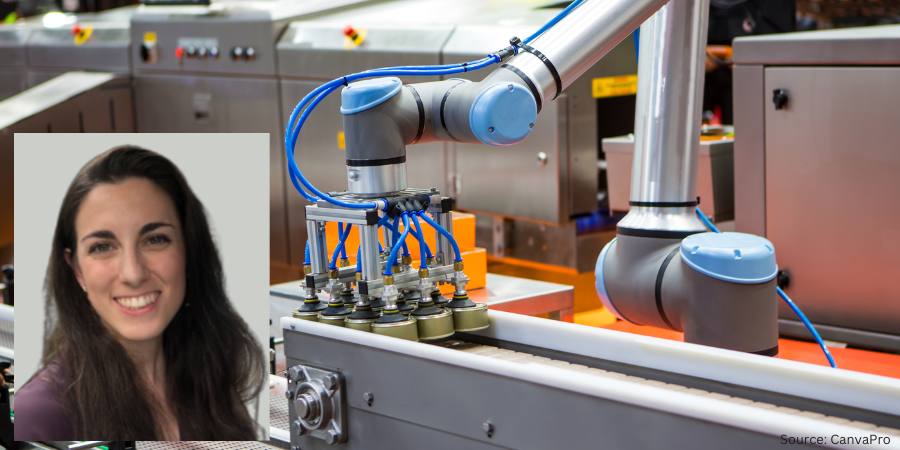Heat Treat Today publishes eight print magazines a year, and included in each is a letter from the editor, Bethany Leone. In this letter, Bethany reviews the recent dip in enthusiasm about electric vehicles (EVs) and raises some questions about what this means for the future of the industry. This letter first appeared in the August 2024 Automotive print edition.
Feel free to contact Bethany at bethany@heattreattoday.com if you have a question or comment.
How much do you care about whether or not electric vehicles (EVs) are being manufactured?
I have a family member who loves his Tesla. Honestly, it’s quite epic. The engineering is seamless; the ride is smooth. Out west, the incentives to buy, paired with the warm climate, made it a sensible move. Top it off with an at-home charging station and plenty of access to compatible charging stations in his city, and you’ve got it made.
The constant stream of new information about electric vehicles brings a juxtaposed vision of amazing technological realities alongside stubborn supply chain and infrastructure mishaps.
In Q4 2023, demand reached an all-time high, with 8.1% of all new vehicle purchases being EVs. Yet 2024 has seen turbulent lows (Q4 2024 market share lower than Q1 2020) and Hertz being caught $750 million in debt after a failed EV integration strategy. This has since tapered, though interest in hybrid grows rapidly.
With the narrow adoption of EVs, as well as the uncertain projections of the automotive industry based on Tesla’s movements, the impetus to learn more about heat treating components for this new technology may feel . . . less than imperative.
But there are two realities to consider.
1. New Tech Ebb & Flow

Source: CanvaPro
Uncertainties abound with any new technology, especially one that carries the burden of contributing to decreasing carbon emissions. (At the current rate, sales will not allow the market to reach the Biden administration’s 50% EV sales goal by the 2030 target.)
EVs are losing traction in market demand: The excitement from early wave adopters seems to have come to an end. The long-anticipated second wave of users from the middle class may not happen this year. And grumblings about range anxiety, long charge time, high insurance and repair costs, and battery efficiency in cold weather environments continue to keep customers from the lot.
The biggest burden nationwide has been limited access to reliable charger ports, especially for non-Tesla drivers. The WSJ covered this problem in an LA case report, noting that almost half of non-Tesla chargers had one of these top three issues:
- Out of order
- Payment issues
- Connection issues between charger and vehicle
In the U.S., nearly half (46%) of current EV owners are likely to switch back to ICE, McKinsey & Company reported in June 2024. The culprits ranked by the full global set of responders indicated the following reasons for their hesitation.
- 35% Charging infrastructure in public not yet good enough for individual
- 34% High total costs of ownership
- 32% Driving patterns on long distance trips too much impacted
- 24% Cannot charge at home
- 21% Needing to worry about charging is too stressful
- 16% Changing mobility requirements
- 13% Do not like the driving experience

Source: CanvaPro
But to be fair, these are growing pain problems. The issue of access to charging stations is set to be alleviated within the next year as major EV automakers adapt to shared charging station technology. Car manufacturers including Audi, BMW, Ford, and GM signed an agreement that will allow their EV models to use the NACS charging stations developed by Tesla.
For dense, old cities where there is no room for a personal garage at the home and parking is first come, first serve — this is coming from someone who lives and drives in Pittsburgh — at-home charging solutions will need to be created, but it’s not impossible.
And the issue of clean electrification infrastructure, cost, and recycling batteries continues to be discussed, to varying degrees of success. So, while the reality is that EV sales are slowing, this is likely the natural lag before further improvements and a second wave adoption.
2. Heat Treating Is Inspired, Not Limited, by EV Advances
While going electric in your in-house heat treat operations may have you looking to integrate induction hardening for your gears and valves, the future of EV does not seem to impact the value of significant skills your department needs to learn across automotive heat treat. “When it comes to heat treating,” writes Rob Simmons, metallurgical engineering manager at Paulo, “innovations are rarely exclusive to EVs.” (Read his full article about processes and components here.)
It’s encouraging. We will still brace for change across the automotive industry because of new demands from the EV sector. Despite slowing demand, the increasing attention on hybrid vehicles will certainly keep us busy making vehicles lighter, more durable, and more efficient.
Contact Bethany at bethany@heattreattoday.com.
Find Heat Treating Products And Services When You Search On Heat Treat Buyers Guide.Com







